●
THE MOON IS NEW TONIGHT
MARCH 2, 2022

From a walk in January at Finzel Swamp, a frost pocket near my hometown. From MD’s DNR:
“…a remnant boreal fen has been left behind from the Pleistocene Epoch.”
It would be time to start seeds indoors, were I able to keep a garden this summer. I miss growing things– I’ve been thinking a lot lately about alternatives to a full garden– indoor herbs, mushrooms perhaps, or faster return crops like radishes or arugula (these only take 5 weeks or so from seeding to harvest). Or trying something like ginger indoors?! Probably due to a vegetarian-diet generated craving for umami, I’ve also been dreaming of some sort of home- heliciculture setup. I’ve never had more of a hungerin' for shell creatures than reading Euell Gibbons’ descriptions in his 1964 foraging field guide, Stalking the Blue-Eyed Scallop, which I laid eyes on recently and may have got my mind onto snails. On the topic of Gibbons, I would highly recommend his first foraging guide, Stalking the Wild Asparagus if you’re trying to get into foraging in the U.S. A reminder that we are entering a time of year where food is more abundant in the forest, too. Anyway, hopefully there will be some updates on the quick-turn-around agri-experimentation front next month. OK, final thing– was just googled old Euell to make sure I got the spelling right, and he has a third book in the series, Stalking the Healthful Herbs (1966) !? May the cosmic powers of the used book stores of the world bring it to me.
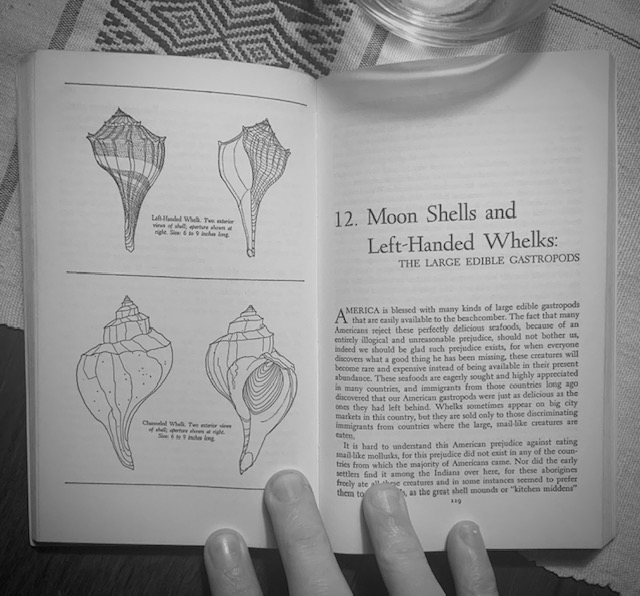
I try to find and share PDFs of any books I mention in this newsletter. Sadly, I couldn’t track down digital copies of any of these. But do reach out if you’re interested, I’d gladly scan some of these or other foraging books I have for anyone interested in chowing down on some large edible gastropods.
The reason I am not able to keep a garden is, I am thrilled to say, because I will be in Rome (!!) for a month or so this summer, studying the architecture of the city in a hand-drawing-based program through school. I’ve signed myself up for an intensive Italian language course (meets every day for two hours, all in Italian!) this semester, to make the most of it, so if anyone knows anyone who speaks Italian and wouldn’t mind listening to my beginner's babbling, point ‘em my way!
A RECOMMENDED ENCOUNTER: THUMB TWIDDLING

I mentioned this strange act in a conversation the other day, and it got us musing on origins, etymology, and generally what the hell it is. The main takeaways from my reflections on thumb twiddling are: 1) that it is hilarious 2) that it might be a helpful (and hilarious, and therefore joyful) practice to avoid the ever-present screen scrolling while at rest. At its core, thumb twiddling is doing nothing (haven’t read this Jenny Odell book yet, but feels related). I am all for more ways to be “unproductive” in a capitalist society, and theres something so stupid about thumb twiddling, and that it gets its own verb in the english language (can anything be twiddled? twisted+fiddled?), that it just cracks me up any time I do it. And so my recommended encounter this week is to twiddle, and to laugh at the absurdity of our humanity, reality, thumbs.
A PROJECT OF NOTE:
ARTHURDALE, WEST VIRGINIA

Countless governmental experiments in urban planning still define our cities, for better or worse ('renewal' era highways, malls), but on the whole, little government attention has been paid to rural community planning, both in the U.S. and the broader global industrialized world. (Even in the early years of the Soviet Union, Lenin’s New Economic Policy largely ignored the countryside entirely, leaving farmers to the “free market”, aside from a state-mandated tax. The laissez-faire approach to rural land use by the U.S. claims quite a variegated cast of adherents – the cultural urban-rural divide holds strong across political realities, it seems).
In America, a few large-scale regional planning efforts such as the Tennessee Valley Authority, or the National Highway system, the work of the C.C.C., and the other New Deal programs remain a unique exception of federal government participation in rural affairs. And none offers a more unique case study of the FDR brand of socialism than Arthurdale, WV. A pet project of Eleanor Roosevelt, and only possible through her passion, Arthurdale was a planned community as a social experiment, an attempt to foster economic self-sufficiency amid the Great Depression. Facilitated by the short lived Subsistence Homesteads Division, it aimed to develop a local economy and workforce and as such escape the waves rocking the global market. Homes were constructed and awarded to citizens on the “homestead” model of a small subsistence farm. The self-sufficient economy for the town was structured around craft products, from weaving, to metalworking, to furniture.


Alongside this utopic artisan village which might have done William Morris proud was a private (though possibly state-subsidized) vacuum cleaner factory. There’s much more to get into here, but the fact that craft production and industrial factory shared space in a very small, subsistence farming community is bizarre to me (and that this strange economic approach was not just planned, but actually built and run with mixed success by the U.S. government for the better part of a decade!) Arthurdale was full of such seeming contradictions: “homesteaders” were selected due to their farming prowess, but also worked in the craft shops (non-specialized workers being a pretty radical proposal, now). Houses were fully electrified with modern heating systems, but this wasn’t an ‘urban outpost’ showcasing technological progress; the Civil Works Administration also “paid local women to make the curtains and bed linens”. (From Arthurdale Heritage) Also: according to WV public television, this was to be the first of 99 other planned rural communities like it (!)
Arthurdale is now a private community; the feds sold it off in 1947. It's about an hour and a half from my hometown (Cumberland, MD) so I hope to visit one day and do a bit more digging.



photos from LOC.
MEMORY FROM A WINTER MORNING 20 YEARS AGO
The light comes filtered through the bed sheets. He feels this warmth first, no thoughts. Perception floats within the soft medium of sunlight, like floating in the warm waters of the bay, like the imagined memory of being in the womb. And then the boy stirs himself enough to begin to take in what he sees, moving his limbs as his vision blinks into reality. His head under the covers, his eyes begin following the curvature of the sheet, it's undulations stretching to the far periphery of his vision where he knew his feet to be. He feels that he is actually a small explorer standing in an otherworldly and awe-inspiringly massive cave. Each wrinkle in the sheet, a sheet of granite, each twist another cavern entrance off of the main atrium. He jumps down from the boulder on which he stands to appraise this newly discovered world, and marches bravely across the silty cavern floor. An eerily still, subterranean lake expands before him. The walls of the cave seem to glow from within--perhaps the only source of light is from some bioluminescent fungus and perhaps he is the first human to ever lay eyes on such a natural wonder. Or maybe the cave walls have been hollowed thin by some erosion. Him within a hollow, translucent mountain.
OUTCROPPINGS: ERRANT TOPOGRAPHIES IN MANHATTAN’S GRID
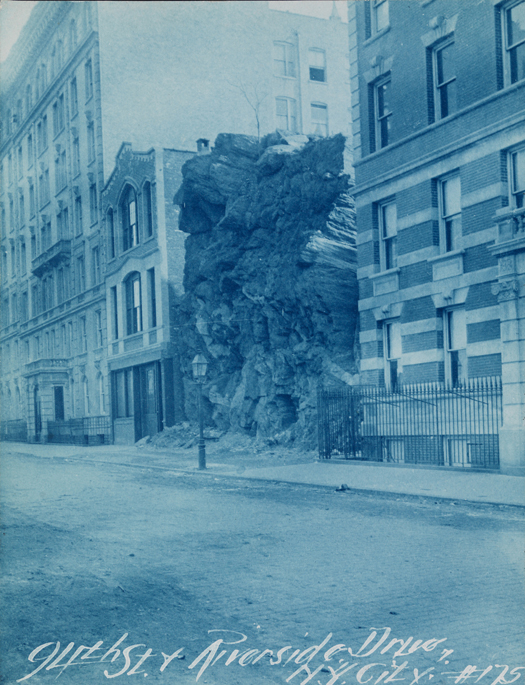
For my design studio this semester, I’ve been doing research on Harlem, and as such the history of Manhattan's development. Far before the land was taken by colonists, the Lenape people called it the “island of many hills.” Indeed, looking at the 1800s topographical map of the island, following the Commissioner's Plan of 1811, the origin of the eternal grid, one can count upwards of 573 discreet hills on the island. The engineering feat that is the NYC landscape is now more than two centuries in the make, and yet some of these hills still poke through. I’ve yet to make the trip, but the hill remaining at 10 Bennett Ave. feels well worth the trip. As much as it can be in New York, this plot is undisturbed ground, and the rock formation there is presumably relatively unchanged since pre-colonial conquest.
There are great photos and more information on the creation of Manhattan's grid at The Greatest Grid.
 Map from LOC.
Map from LOC.

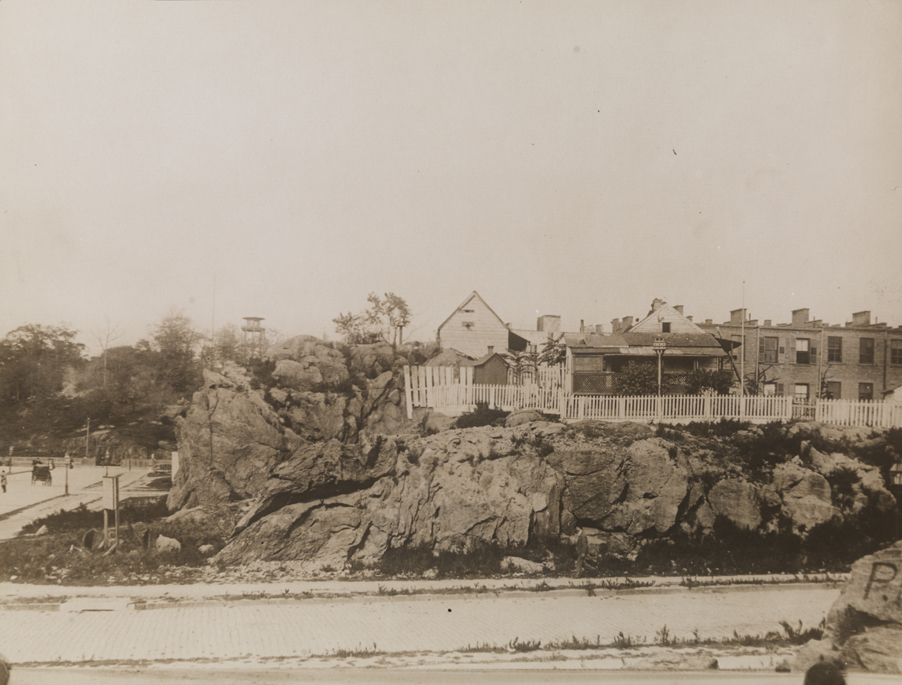
Photos from MCNY

SOME PHOTOS FROM RECENT WALKS
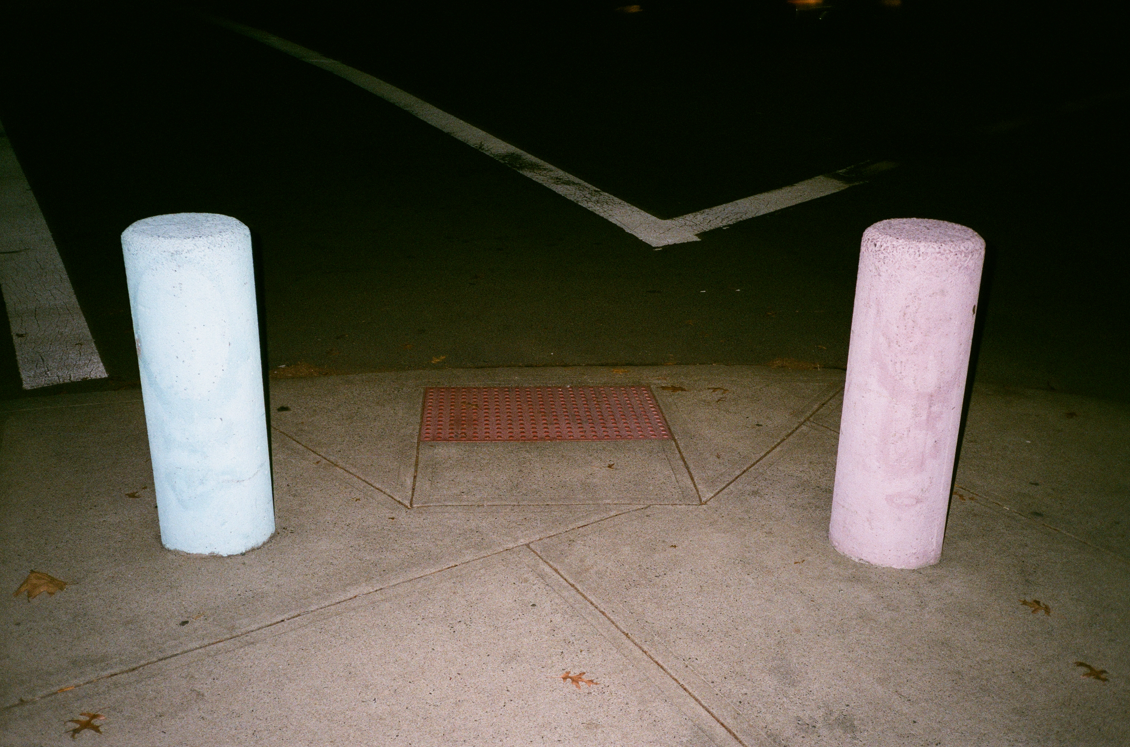
New Haven, CT

Finzel Swamp, Finzel, MD

New Haven, CT

New Haven, CT

New Haven, CT

New Haven, CT
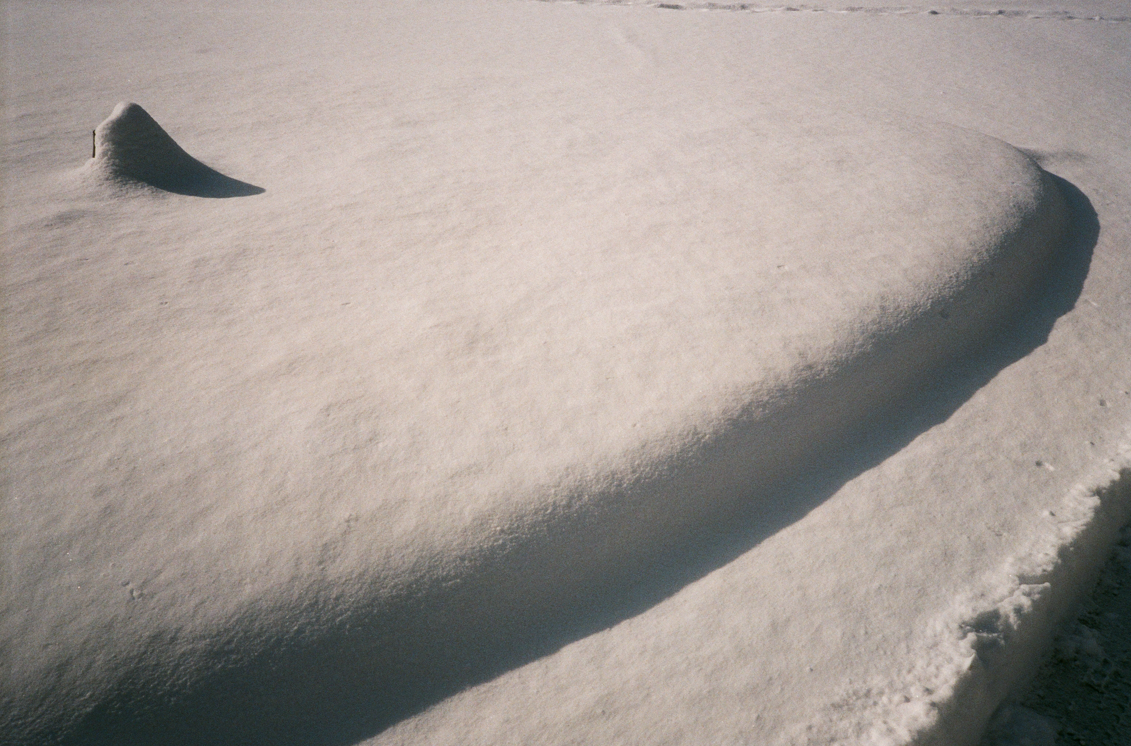
New Haven, CT

Me and my mom in ole' Cumberland this winter
●